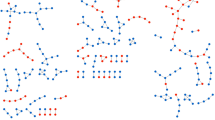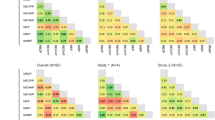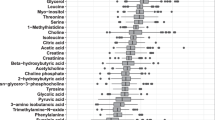Abstract
Background
Knowing which environmental chemicals contribute to metabolites observed in humans is necessary for meaningful estimates of exposure and risk from biomonitoring data.
Objective
Employ a modeling approach that combines biomonitoring data with chemical metabolism information to produce chemical exposure intake rate estimates with well-quantified uncertainty.
Methods
Bayesian methodology was used to infer ranges of exposure for parent chemicals of biomarkers measured in urine samples from the U.S population by the National Health and Nutrition Examination Survey (NHANES). Metabolites were probabilistically linked to parent chemicals using the NHANES reports and text mining of PubMed abstracts.
Results
Chemical exposures were estimated for various population groups and translated to risk-based prioritization using toxicokinetic (TK) modeling and experimental data. Exposure estimates were investigated more closely for children aged 3 to 5 years, a population group that debuted with the 2015–2016 NHANES cohort.
Significance
The methods described here have been compiled into an R package, bayesmarker, and made publicly available on GitHub. These inferred exposures, when coupled with predicted toxic doses via high throughput TK, can help aid in the identification of public health priority chemicals via risk-based bioactivity-to-exposure ratios.
This is a preview of subscription content, access via your institution
Access options
Subscribe to this journal
Receive 6 print issues and online access
$259.00 per year
only $43.17 per issue
Buy this article
- Purchase on Springer Link
- Instant access to full article PDF
Prices may be subject to local taxes which are calculated during checkout







Similar content being viewed by others
Data availability
All biomonitoring data from NHANES is hosted online by the CDC (https://wwwn.cdc.gov/nchs/nhanes). The bayesmarker input data (metabolite table, weights table, and metabolite map) along with data used to generate each figure is included in the supplemental data file. The supplemental data also includes the exposure estimates (median and 95% CIs) using the most recent NHAHES cohort data for each metabolite.
References
Anastas P, Teichman K, Hubal EC. Ensuring the safety of chemicals. J Expo Sci Environ Epidemiol. 2010;20:395–6.
Judson RS, Kavlock RJ, Setzer RW, Hubal EA, Martin MT, Knudsen TB, et al. Estimating toxicity-related biological pathway altering doses for high-throughput chemical risk assessment. Chem Res Toxicol. 2011;24:451–62.
Wetmore BA, Wambaugh JF, Ferguson SS, Sochaski MA, Rotroff DM, Freeman K, et al. Integration of dosimetry, exposure, and high-throughput screening data in chemical toxicity assessment. Toxicol Sci. 2012;125:157–74.
National Research Council. Exposure Science in the 21st Century: A Vision and a Strategy. Washington, D.C.: National Academies Press; 2012.
Egeghy PP, Vallero DA, Cohen Hubal EA. Exposure-based prioritization of chemicals for risk assessment. Enviromental Sci Policy. 2011;14:950–64.
National Research Council. Human Biomonitoring for Environmental Chemicals. Washington, D.C.: The National Academies Press; 2006.
Arnot JA, Mackay D, Webster E, Southwood JM. Screening level risk assessment model for chemical fate and effects in the environment. Environ Sci Technol. 2006;40:2316–23.
Rosenbaum RK, Bachmann TM, Swirsky Gold L, Huijbregts MAJ, Jolliet O, Juraske R, et al. USEtox-The UNEP−SETAC toxicity model: Recommended characterization factors for human toxicity and freshwater ecotoxicicty in life cycle impact assessment. Int J Life Cycle Assess. 2008;13:532–46.
Aylward LL. Integration of biomonitoring data into risk assessment. Curr Opin Toxicol. 2018;9:14–20.
Sobus JR, DeWoskin RS, Tan YM, Pleil JD, Phillips MB, George BJ, et al. Uses of NHANES biomarker data for chemical risk assessment: trends, challenges, and opportunities. Environ Health Perspect. 2015;123:919–27.
Angerer J, Bird MG, Burke TA, Doerrer NG, Needham L, Robison SH, et al. Strategic biomonitoring initiatives: moving the science forward. Toxicol Sci. 2006;93:3–10.
Rudel RA, Dodson RE, Newton E, Zota AR, Brody JG. Correlations between urinary phthalate metabolites and phthalates, estrogenic compounds 4-butyl phenol and o-phenyl phenol, and some pesticides in home indoor air and house dust. Epidemiology 2008;19:S332.
Wambaugh JF, Wang A, Dionisio KL, Frame A, Egeghy P, Judson R, et al. High throughput heuristics for prioritizing human exposure to environmental chemicals. Environ Sci Technol. 2014;48:12760–7.
Wambaugh JF, Setzer RW, Reif DM, Gangwal S, Mitchell-Blackwood J, Arnot JA, et al. High-throughput models for exposure-based chemical prioritization in the ExpoCast project. Environ Sci Technol. 2013;47:8479–88.
Bennett DH, Furtaw EJ Jr. Fugacity-based indoor residential pesticide fate model. Environ Sci Technol. 2004;38:2142–52.
Biryol D, Nicolas CI, Wambaugh J, Phillips K, Isaacs K. High-throughput dietary exposure predictions for chemical migrants from food contact substances for use in chemical prioritization. Environ Int. 2017;108:185–94.
Li L, Westgate JN, Hughes L, Zhang X, Givehchi B, Toose L, et al. A model for risk-based screening and prioritization of human exposure to chemicals from near-field sources. Environ Sci Technol. 2018;52:14235–44.
Arnot JA, Mackay D. Policies for chemical hazard and risk priority setting: can persistence, bioaccumulation, toxicity, and quantity information be combined? Environ Sci Technol. 2008;42:4648–54.
Isaacs KK, Glen WG, Egeghy P, Goldsmith MR, Smith L, Vallero D, et al. SHEDS-HT: an integrated probabilistic exposure model for prioritizing exposures to chemicals with near-field and dietary sources. Environ Sci Technol. 2014;48:12750–9.
Sobus JR, Tan YM, Pleil JD, Sheldon LS. A biomonitoring framework to support exposure and risk assessments. Sci Total Environ. 2011;409:4875–84.
Tan YM, Sobus J, Chang D, Tornero-Velez R, Goldsmith M, Pleil J, et al. Reconstructing human exposures using biomarkers and other “clues”. J Toxicol Environ Health B Crit Rev. 2012;15:22–38.
Ring CL, Arnot J, Bennett DH, Egeghy P, Fantke P, Huang L, et al. Consensus modeling of median chemical intake for the U.S. population based on predictions of exposure pathways. Environ Sci Technol. 2018;53:719–32.
CDC National Health and Nutrition Examination Survey: National Center for Health Statistics; [Available from: https://wwwn.cdc.gov/nchs/nhanes/Default.aspx.
CDC Fourth National Report on Human Exposure to Environmental Chemicals; Centers for Disease Control and Prevention, National Center for Health Statistics: Atlanta, Georgia. February, 2011.
CDC Third National Report on Human Exposure to Environmental Chemcials; Centers for Disease Control and Prevention, National Center for Health Statistics: Atlanta, Georgia. July 2005.
T. L. Analysis of Complex Survey Samples. J Stat Softw. 9 2004.
Lakind JS, Naiman DQ. Bisphenol A (BPA) daily intakes in thedaily intakes in the United States: Estimates from the 2003-2004 NHANES urinary BPA data. J Expo Sci Env Epid. 2008;18:608–15.
Lyons MA, Yang RS, Mayeno AN, Reisfeld B. Computational toxicology of chloroform: reverse dosimetry using Bayesian inference, Markov chain Monte Carlo simulation, and human biomonitoring data. Environ Health Perspect. 2008;116:1040–6.
Mage DT, Allen RH, Gondy G, Smith W, Barr DB, Needham LL. Estimating pesticide dose from urinary pesticide concentration data by creatinine correction in the Third National Health and Nutrition Examination Survey (NHANES-III). J Expo Anal Env Epid. 2004;14:457–65.
Reyes JM, Price PS. Temporal trends in exposures to six phthalates from biomonitoring data: implications for cumulative risk. Environ Sci Technol. 2018;52:12475–83.
LaKind JS, Naiman DQ, Hays SM, Aylward LL, Blount BC. Public health interpretation of trihalomethane blood levels in the United States: NHANES 1999-2004. J Expo Sci Environ Epidemiol. 2010;20:255–62.
Tan YM, Liao KH, Clewell HJ. Reverse dosimetry: interpreting trihalomethanes biomonitoring data using physiologically based pharmacokinetic modeling. J Expo Sci Env Epid. 2007;17:591–603.
Aylward LL, Hays SM, Smolders R, Koch HM, Cocker J, Jones K, et al. Sources of variability in biomarker concentrations. J Toxicol Environ Health B Crit Rev. 2014;17:45–61.
Georgopoulos PG, Sasso AF, Isukapalli SS, Lioy PJ, Vallero DA, Okino M, et al. Reconstructing population exposures to environmental chemicals from biomarkers: challenges and opportunities. J Expo Sci Environ Epidemiol. 2009;19:149–71.
LaKind JS, Barraj L, Tran N, Aylward LL. Environmental chemicals in people: challenges in interpreting biomonitoring information. J Environ Health. 2008;70:61–4.
Aylward LL, Hays SM, Zidek A. Variation in urinary spot sample, 24 h samples, and longer-term average urinary concentrations of short-lived environmental chemicals: implications for exposure assessment and reverse dosimetry. J Expo Sci Environ Epidemiol. 2017;27:582–90.
Federal Insecticide, Fungicide, and Rodenticide Act Scientific Advisory Panel. New High Throughput Methods to Estimate Chemical Exposure. 2014.
Kissel JC, Curl CL, Kedan G, Lu C, Griffith W, Barr DB, et al. Comparison of organophosphorus pesticide metabolite levels in single and multiple daily urine samples collected from preschool children in Washington State. J Expo Anal Environ Epidemiol. 2005;15:164–71.
Wambaugh JF, Wetmore BA, Pearce R, Strope C, Goldsmith R, Sluka JP, et al. Toxicokinetic triage for environmental chemicals. Toxicol Sci. 2015;147:55–67.
George BJ, Gains-Germain L, Broms K, Black K, Furman M, Hays MD, et al. Censoring trace-level environmental data: statistical analysis considerations to limit bias. Environ Sci Technol. 2021;55:3786–95.
Gelman A. Prior distributions for variance parameters in hierarchical models (comment on article by Browne and Draper). Bayesian Anal. 2006;1:515–34.
Plummer M. JAGS: A program for analysis of Bayesian graphical models using Gibbs sampling. 2003.
Williams AJ, Grulke CM, Edwards J, McEachran AD, Mansouri K, Baker NC, et al. The CompTox Chemistry Dashboard: a community data resource for environmental chemistry. J cheminformatics. 2017;9:61.
Shahbaz H, Gupta M. Creatinine Clearance. StatPearls. Treasure Island (FL)2021.
Rule AD, Bailey KR, Schwartz GL, Khosla S, Lieske JC, Melton LJ 3rd. For estimating creatinine clearance measuring muscle mass gives better results than those based on demographics. Kidney Int. 2009;75:1071–8.
Goldwasser P, Aboul-Magd A, Maru M. Race and creatinine excretion in chronic renal insufficiency. Am J Kidney Dis. 1997;30:16–22.
Rule AD, Larson TS, Bergstralh EJ, Slezak JM, Jacobsen SJ, Cosio FG. Using serum creatinine to estimate glomerular filtration rate: accuracy in good health and in chronic kidney disease. Ann Intern Med. 2004;141:929–37.
Cockcroft DW, Gault MH. Prediction of creatinine clearance from serum creatinine. Nephron 1976;16:31–41.
Walser M. Creatinine excretion as a measure of protein nutrition in adults of varying age. JPEN J Parenter Enter Nutr. 1987;11Suppl 5:73S–8S.
R Core Team. R: A language and environment for statistical computing. 3.6.1 ed 2013.
Lumley T. Analysis of complex survey samples. J Stat Softw. 2004;9:1–19.
Metropolis N, Rosenbluth AW, Rosenbluth MN, Teller AH, Teller E. Equation of state calculations by fast computing machines. J Chem Phys. 1953;21:1087–92.
Calaway R, Weston, S., & Calaway, M. R. Package ‘foreach’. R package. 2015:1-10.
Calaway R, Weston, S., & Calaway, M. R. Package ‘doParallel’. 2015.
Heidelberger P, Welch PD. Simulation run length control in the presence of an initial transient. Oper Res. 1983;31:1109–44.
Gelman A, Rubin DB. Inference from iterative simulation using multiple sequences (with discussion). Stat Sci. 1992;7:457–72.
Pearce RG, Setzer RW, Strope CL, Wambaugh JF, Sipes NS. httk: R package for high-throughput toxicokinetics. J Stat Softw. 2017;79:1–26.
Mansouri K, Karmaus AL, Fitzpatrick J, Patlewicz G, Pradeep P, Alberga D, et al. CATMoS: collaborative acute toxicity modeling suite. Environ health Perspect. 2021;129:47013.
Mansouri K, Grulke CM, Judson RS, Williams AJ. OPERA models for predicting physicochemical properties and environmental fate endpoints. J cheminformatics. 2018;10:10.
Venman BC, Flaga C. Development of an acceptable factor to estimate chronic end points from acute toxicity data. Toxicol Ind Health. 1985;1:261–9.
Janga SC, Babu MM. Network-based approaches for linking metabolism with environment. Genome Biol. 2008;9:239.
Pleil JD, Williams MA, Sobus JR. Chemical safety for Sustainability (CSS): human in vivo biomonitoring data for complementing results from in vitro toxicology-a commentary. Toxicol Lett. 2012;215:201–7.
Thomas RS, Bahadori T, Buckley TJ, Cowden J, Deisenroth C, Dionisio KL, et al. The next generation blueprint of computational toxicology at the U.S. environmental protection agency. Toxicol Sci. 2019;169:317–32.
Wetmore BA, Wambaugh JF, Allen B, Ferguson SS, Sochaski MA, Setzer RW, et al. Incorporating high-throughput exposure predictions with dosimetry-adjusted in vitro bioactivity to inform chemical toxicity testing. Toxicol Sci. 2015;148:121–36.
National Research Council. Risk assessment in the federal government: managing the process 1983.
U.S. Department of Energy. New Process for Producing Styrene Cuts Costs, Saves Energy, and Reduces Greenhouse Gas Emissions. 2013.
Hauptman M, Woolf AD. Childhood ingestions of environmental toxins: what are the risks? Pediatr Ann. 2017;46:e466–e71.
Lehmler HJ, Gadogbe M, Liu B, Bao W. Environmental tin exposure in a nationally representative sample of U.S. adults and children: The National Health and Nutrition Examination Survey 2011-2014. Environ Pollut. 2018;240:599–606.
Guney M, Zagury GJ, Dogan N, Onay TT. Exposure assessment and risk characterization from trace elements following soil ingestion by children exposed to playgrounds, parks and picnic areas. J Hazard Mater. 2010;182:656–64.
Ljung K, Selinus O, Otabbong E, Berglund M. Metal and arsenic distribution in soil particle sizes relevant to soil ingestion by children. Appl Geochem. 2006;21:1613–24.
Buckley JP, Barrett ES, Beamer PI, Bennett DH, Bloom MS, Fennell TR, et al. Opportunities for evaluating chemical exposures and child health in the United States: the Environmental influences on Child Health Outcomes (ECHO) Program. J Expo Sci Environ Epidemiol. 2020;30:397–419.
Aurisano N, Huang L, Mila ICL, Jolliet O, Fantke P. Chemicals of concern in plastic toys. Environ Int. 2021;146:106194.
Consumer Product Safety Improvement Act of 2008, (2008).
Prohibition of Children’s Toys and Child Care Articles Containing Specified Phthalates: Determinations Regarding Certain Plastics, (2017).
Foissac F, Bouazza N, Valade E, De Sousa Mendes M, Fauchet F, Benaboud S, et al. Prediction of drug clearance in children. J Clin Pharm. 2015;55:739–47.
Clewell HJ, Tan YM, Campbell JL, Andersen ME. Quantitative interpretation of human biomonitoring data. Toxicol Appl Pharm. 2008;231:122–33.
Setzer RW, Rabinowitz, J.R., Wambaugh, J.F, editor Inferring population exposures from biomonitoring data on urine concentrations. Society of Toxicology 53rd Annual Meeting; 2014; Phoenix, AZ.
Aylward LL, Kirman CR, Adgate JL, McKenzie LM, Hays SM. Interpreting variability in population biomonitoring data: role of elimination kinetics. J Expo Sci Environ Epidemiol. 2012;22:398–408.
Acknowledgements
We thank Drs. Elaina Kenyon and Jeff Minucci for their helpful U.S. EPA internal reviews of the manuscript and Dr. Caroline Ring for useful discussion.
Funding
The United States Environmental Protection Agency (EPA) through its Office of Research and Development (ORD) funded the research described here. The views expressed in this publication are those of the authors and do not necessarily represent the views or policies of the U.S. EPA. Reference to commercial products or services does not constitute endorsement
Author information
Authors and Affiliations
Contributions
RWS and JFW devised and wrote the original R code and Bayesian inference model. ZS made minor updates to the original R code and then adapted it into the bayesmarker R package. ZS performed data analyses and drafted figures, tables, and text. RRS built the original parent-metabolite mapping and RRS and VH helped curate the final bayesmarker input files. RWS, VH, RRS, KKI, and JFW reviewed and provided comments on the text.
Corresponding author
Ethics declarations
Competing interests
The authors declare no competing interests.
Additional information
Publisher’s note Springer Nature remains neutral with regard to jurisdictional claims in published maps and institutional affiliations.
supplementary information
Rights and permissions
Springer Nature or its licensor holds exclusive rights to this article under a publishing agreement with the author(s) or other rightsholder(s); author self-archiving of the accepted manuscript version of this article is solely governed by the terms of such publishing agreement and applicable law.
About this article
Cite this article
Stanfield, Z., Setzer, R.W., Hull, V. et al. Bayesian inference of chemical exposures from NHANES urine biomonitoring data. J Expo Sci Environ Epidemiol 32, 833–846 (2022). https://doi.org/10.1038/s41370-022-00459-0
Received:
Revised:
Accepted:
Published:
Issue Date:
DOI: https://doi.org/10.1038/s41370-022-00459-0
Keywords
This article is cited by
-
Pesticide exposure and asthma morbidity in children residing in urban, multi-family housing
Journal of Exposure Science & Environmental Epidemiology (2023)
-
Exposure forecasting – ExpoCast – for data-poor chemicals in commerce and the environment
Journal of Exposure Science & Environmental Epidemiology (2022)



